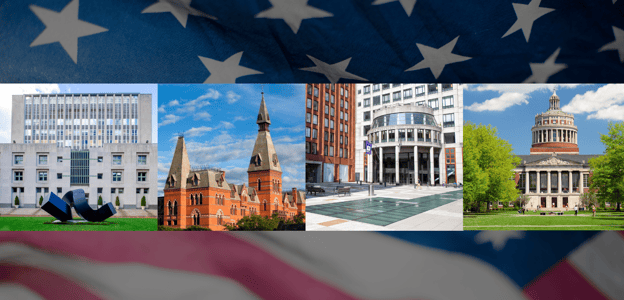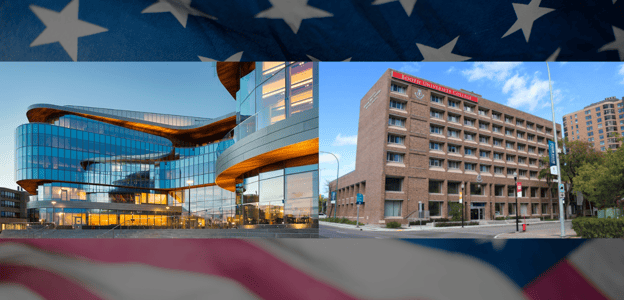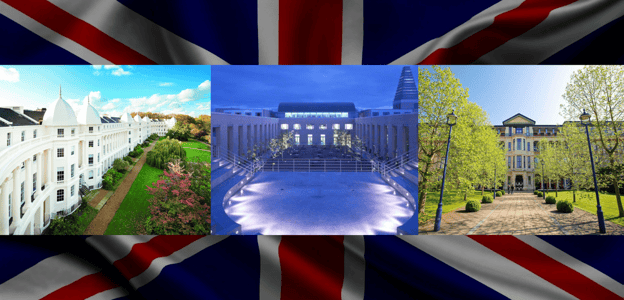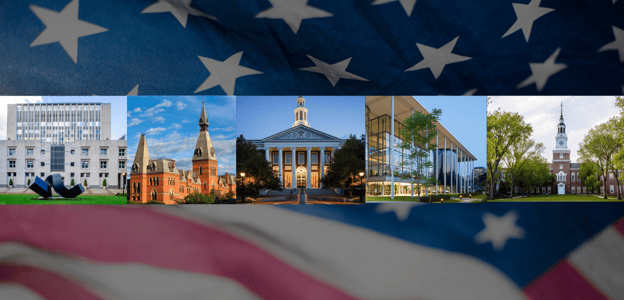MBA in California: Stanford vs HAAS vs UCLA vs Marshall
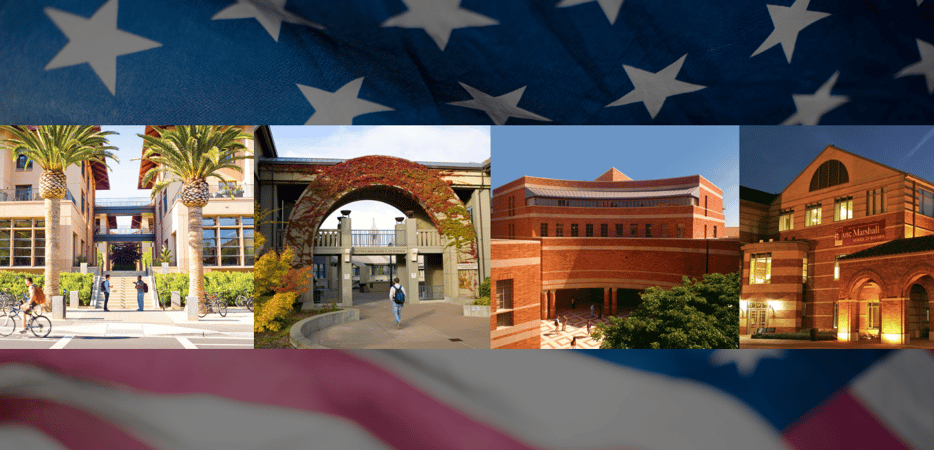
Some of the best MBA programs in the entire world are located in California. In this article, we compare and contrast each of the top MBA programs in California so Merchant students have a leg up in terms of knowledge. Stanford University and UC Berkeley are two prestigious business schools located in Northern California. Both schools are known for their outstanding job placement skills in the Northern California tech hub, Silicon Valley. UCLA and USC are situated much closer to Los Angeles in Southern California. These schools are known for their ability to get students great jobs just a few months after graduation. All of these programs should be considered by international students who are looking to pursue an MBA.
| Stanford University – Stanford Graduate School of Business | University of California, Berkeley – Haas School of Business | UCLA – Anderson School of Management | USC – Marshall School of Business | |
| Program Duration | 2 years. | 2 years. | 2 years. | 2 years. |
| Tuition (2020) | US$74,706 | US$68,444 | US$65,124 | First year: US$64,575 Second year: US$$62,525 |
| Locations | The Knight Management Center is situated within the greater university campus in Stanford, California. Stanford GSB maintains very close links with the venture capital, finance and technology firms of nearby Silicon Valley. | UC Berkeley is located in downtown Berkeley (Bay Area), 30 minutes away from San Francisco and 1 hour away from Silicon Valley. | The school is located on the north part of the UCLA campus. The campus is in the residential area of Westwood and bordered by Bel-Air to the north, Beverly Hills to the east, and Brentwood to the west. It is 20 minutes away from downtown LA. |
Marshall is located at the heart of Los Angeles and Southern California, 10 minutes away from downtown LA and 20 minutes away from Santa Monica beach. |
| Class Size | 436 students | 331 | 360 | 217 |
| Gmat average score | 733 average Gmat | 727 | 706 | 707 |
| Average age | 28 years old. | 28 years old. | 28 years old. | 28 years old. |
| Average work experience | 4.7 years | 5.3 years | 4.5 years | 5 years. |
| Academic Information | The full-time MBA program is designed to take place across six quarters, roughly 11 weeks apiece. During Winter Quarter and Spring Quarter, first-year students follow the General Management Foundations curriculum. Also, each first-year student must fulfill a Global Experience Requirement by contributing to a project abroad. Throughout the second year, students can take up to 18 courses total and are free to choose from over 100 elective courses across 10 academic departments. |
During the first year, Haas students are required to take 12 core courses which account for roughly half of the 51 semester credits needed to graduate. All students must also fulfill an experiential learning, or “applied innovation” requirement by completing at least one of over a dozen programs. These include working in small teams on projects for both nonprofit and for-profit organizations, as well as developing socially responsible strategies for large corporations. | The first-year comprises a very structured curriculum, and students may determine the order in which they take 2 of the required 9 courses. In the second year, students may choose to pursue 1 of 15 specializations.The only academic requirement for second-years is the Capstone Project, which offers students two different choices. The Applied Management Research Program (20 weeks of team-based, experiential learning as they complete strategic studies for real business clients) or the Business Creation Option (students spend 2 academic quarters researching and ultimately launching a company while still in school). Second-year students may also spend a term studying abroad. |
Marshall’s full-time MBA program starts in mid-July with a weeklong orientation. There are 5 terms:
|
| Average Post-MBA Salary | Median base salary: US$156,000 | Median base salary: US$140,000 | Median base salary: US$130,000 | Median base salary: US$130,000 |
| Employment Rate | 85% accepted a job offer within 3 months of graduation. | 89.5% received an offer by 3 months after graduation. | 94.1% reported accepting a job by 3 months after graduation. | 91% within 3 months of graduation. |
If you need help with the GMAT or the admissions process we can help. For more information on our different GMAT products see:
- GMAT private classes – see the stories of Will, Teddy, Jessica and Nico and how they approached their GMAT journey with Merchant.
- Merchant Academy – a GMAT teaching innovation that makes taking the GMAT, like an MBA. Click to find out more about the Merchant Academy format.
- Merchant GMAT Hall of Fame – a gallery of some of our clients over the last eight years.
For admissions help see some of the client stories on our admissions page.
Ready to Start?
Fill out the form, and a member of the Merchant Sales Team will be in contact with you shortly to discuss your MBA journey


